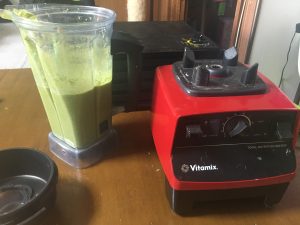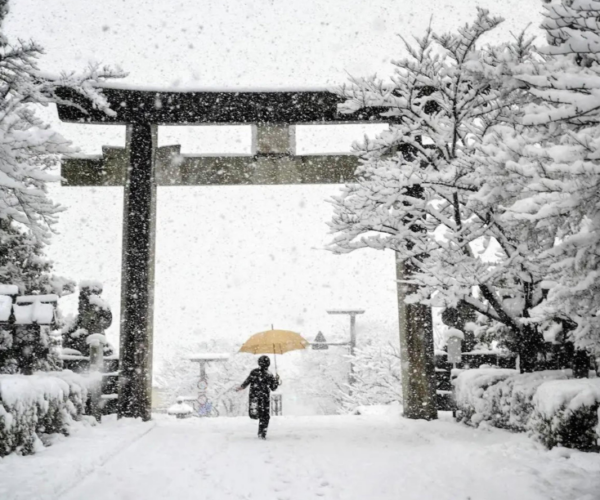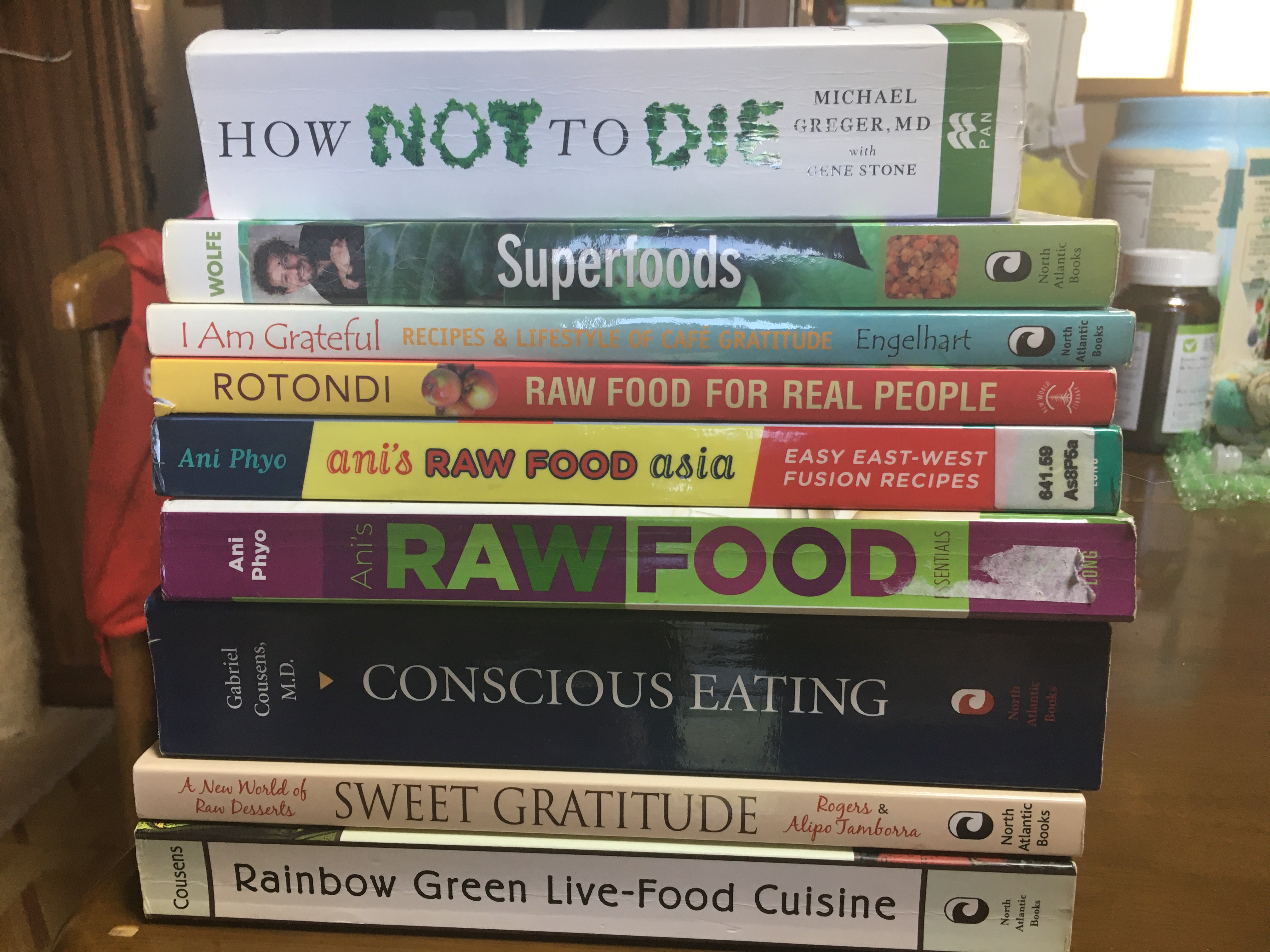A Journey into Raw Veganism
This article originally featured in the September 2020 issue of Connect.
Sheila Mulherin (Hokkaido)
My journey with raw veganism started in 2009, when I returned to the USA from Germany, and my brother had started a raw vegan cleanse. Vegetarian at that time, I became allergic to milk products upon returning home. I experienced a fast learning curve with veganism while my brother was doing the same with raw veganism. He guided me through my new restrictions and planted a seed for raw veganism as well. He inspired the family with his skin clearing up, his outlook taking a 180, and the fresh energy he hadn’t had in years. Fairly fit already, he looked even more toned, but he focused on his vitality and improved health. Raw uncooked food (heated until 118 degrees Fahrenheit or 48 degrees Celsius) still has all its living enzymes and the highest amount of nutrition possible. It’s healing food.
Later, in 2012 I enrolled in a raw vegan chef course. Raw vegan chef courses take place around the world, where you learn hands-on. The most accessible course for residents of Japan is in Bali, with a woman named Sayuri who speaks Japanese and English. I found one in my home state of Massachusetts, at the Organic Garden Café in Beverley. Upon enrollment in the internship, I received a file from the owner sharing his own wisdom and a list of books to read for a thorough introduction to the raw vegan lifestyle, including spirituality, nutrition, recipes, daily routine tips and other wellness tips to live your best life.
I then began six weeks of working alongside the chefs as they guided us through making soups, dressing, salads, crackers, sprouting grains and legumes, wraps, “burger patties,” chocolates, pies, and “pizza,” among other creative dishes. We joked that we paid to be labor at the restaurant, yet we learned a lot through this hands-on experience and appreciated it. We sampled our creations and got discounts on the menu.

We also had some weird interactions. For instance, once a filmmaking group came in, looking for extras to act as World War II concentration camp victims in their film. Did they have an image in their heads of skinny sickly raw vegans? Most of the staff and interns were vegan, and a couple were 100% raw vegans. We were bright-eyed, fresh-faced, lean, and energetic with clear skin and enough meat on our bones. The restaurant owner, 100% or nearly 100% raw vegan, strong and fit, had a lot of meat on his bones. The positive inclusive environment inspired everyone. No one in the raw vegan community is expected to be 100% raw but to focus on the freshness and flavors of the food and the bubbling energy and vitality that increases with our increased raw food intake. Eating 70% or more raw food is enough to consider yourself a raw foodist.
I left the internship experience inspired and ready to embark on my raw food journey. I bought an Excalibur dehydrator, a Ninja mixer, and more raw vegan cookbooks, including works by authors Gabriel Cousens, Ani Phyo and Rod Rotondi.
Later, I became an English teacher in Thailand: a tropical fruit lover’s paradise. I indulged in dragonfruit, jackfruit, mangosteen, soursop, durian, mangos, papaya, and raw coconut meat. However, the public-school English teacher’s wage alone in Thailand doesn’t allow for luxuries such as a dehydrator and Vitamix. The abundant fresh tropical fruit satiated me. I enjoyed mango sticky rice, pad thai and other cooked vegan dishes as well. I continued running on my own and had plenty of energy. After this point, I moved to a new country with little tropical fruit—Japan—and my raw vegan lifestyle fell to the wayside.
Relocating to Japan
Years passed, and in Japan my body changed. I ate processed vegan food with lots of preservatives and starches. My running slowed, and my digestive system protested. Bloated, queasy, and lethargic, I made a drastic change to improve my quality of life. I emailed the owner of the Organic Garden Café, where I participated in the raw vegan internship, asking for the same list of books he had sent me upon enrolling in his internship. I ordered those books and re-immersed myself in the raw vegan lifestyle.
Japan has a different selection of raw ingredients available than the USA and Thailand. The local raw ingredients include: nori sheets, wakame, seaweed salad, walnuts, sesame oil, sesame seeds, soy sauce, plenty of produce, legumes and grains to sprout including: brown rice, small soybeans, adzuki beans and buckwheat groats. At Costco, raw cashews, almonds, prunes, quinoa (for sprouting), cold-pressed olive oil, dried figs, avocados, mangos, chia seeds, hemp seeds and flax seeds are available. Ingredients to order from abroad include: cold-pressed coconut oil, mesquite, supplements, and Irish moss. Also, vegan yogurt starters might not be raw, but I feel the benefits from homemade yogurt for your gut flora outweigh the fact that it’s not raw.
Efforts to Maintain a Raw Vegan Lifestyle
My new goal is to have only raw ingredients in my house. I’m bidding farewell to all the non-raw ingredients currently in my house, including Shin ramyun and mochi blocks. As I eat them, my cravings for the taste are satisfied, but my body is not happy with me! Whole plant-based food is ideal when consuming cooked foods. Although I’ll occasionally eat cooked vegan food at restaurants and cooked vegan food people give me, I must take care. Highly processed oily cooked food causes cramps and bloating, moreso since I’ve gone raw! Restaurants in Japan with a completely or partly raw food menu include: “Raw Food Lohas” in Sapporo and “Rainbow Raw Foods” in Shibuya.
My bento lunches have been less of a spectacle lately: a giant salad with nuts. Students think it’s healthy, and some are so sweet to exclaim “Oishiiso!” looks tasty! Teachers inquire if I eat rice anymore, if I’m consuming enough protein, and so on. Preparing my lunch has received less focus because I’m not even hungry when lunch rolls around anymore. My morning smoothie is hearty and filling: a fistful of greens, rolled oats (not raw [sprouted raw oat groats are the only way to eat oats raw]), any extra vegetables around, chia seeds, ginger, turmeric, a nutritious oil like hemp or pumpkin seed oil, fresh or frozen fruit, and (usually raw sprouted rice) homemade yogurt. I’ll experiment with various lunch dishes such as “burger patties” and wraps in the dehydrator, and “noodles” made from various vegetables with a spiralizer.
Finding much of what you already own isn’t raw is an eye-opening experience. If the package or jar label doesn’t clearly read “raw,” then it’s most likely not. This includes pickles, tahini, peanut butter, and other foods. Many products are roasted, including nori,
nuts, sesame seeds, sesame oil, and carob powder (an ethical chocolate substitute). Quaker rolled oats are steamed, all canned food and most food in jars is pasteurized, and all frozen packaged produce is steamed. My giant 25kg bag of soybeans is non-sprouting. It’s a learning opportunity to make miso, tempeh, and tofu with this bounty of beans. I’ve dedicated myself to becoming at least 70% raw, which still leaves room for cooked food ventures.
Sprouting, an essential part of the raw vegan lifestyle, requires diligence and planning. Raw legumes and brown rice can be sprouted to release peak nutrition and ease digestion and assimilation. Soak them for a day in a jar, and after 24 hours, cover the jar with cheesecloth and secure it on with elastic bands. Rinse the legumes or brown rice inside with cool water, and tip it at an angle so the water can always drain out, sitting in a dish rack is best. For up to 5 days, until it visibly sprouts, rinse the legumes or rice twice a day. If rinsing is skipped once, it may dry out. If left out too long after sprouting, it will grow mold.

Suggested Items for a Raw Vegan Household
A hanging net dryer is an economical (but slow) way to air dry thinly sliced vegetables, fruit, or herbs. An Excalibur dehydrator is ideal to make crackers, wraps, “burgers,” “pizza,” and to dry produce fast while maintaining rawness. The cheaper dehydrators available in Japan have a hole in the middle, so making big wraps is impossible. A quality food processor and/or a Vitamix are also assets in the raw food kitchen. A mushroom log is recommended for a cheap steady supply of shiitake mushrooms. The log stays in a dark, cool damp place, and needs a quick shower twice a day. It will dry out and stop producing mushrooms if one or two showers are skipped. In that case, submerge it in a bucket of water for two days to “recharge” it. Plenty of jars and containers for pickling are handy as well. Pickles are a convenient and tasty way to preserve vegetables and roots. They also pack a punch of flavor when added to salads, bowls and wraps.
On Sweeteners
The raw sweeteners I’ve found available are mesquite, which are ordered from abroad, dates, which are available at Costco, and raw honey, locally produced but not vegan. I aim for environmental consciousness and support of my local economy, so raw honey is the sounder decision in this light. Raw unprocessed stevia leaves are probably impossible to find in Japan. Dates are available at Costco but they are expensive so I use them sparingly. Mesquite experiments recently have produced slightly sweet, earthy results. I’d like to steer away from sugar, which means raw honey has become my choice sweetener.
On Sports
The body responds well to a high raw vegan lifestyle, with higher levels of sustained energy, and speedier recovery from exertions. My body responded well to my ultra-marathon training. I ran a full marathon distance on a hot day, then the next day I ran five energetic fast miles. I also recently completed my first ultramarathon since starting my raw vegan journey: 45 km, summiting seven mountains in 17 hours. My fuel was chia seed and puréed fruit pudding squeeze pouches, homemade oat bars, fresh fruit and cherry tomatoes. I recovered within three days. The only feedback I’ve heard from an ultramarathon runner on raw veganism came from Scott Jurek’s book “Eat and Run.” He writes that a 100% raw vegan diet cannot supply enough calories to meet the demands of ultramarathons. He came to appreciate the freshness of raw vegetables though. I keep in mind that men burn more calories than women. As well, he is an elite athlete, and will burn through much more fuel in a 100 miler than me. I must research more, and learn through my own experiences.
To Wrap it Up
There’s no right or wrong way to partake in raw veganism. It will benefit you the more you do it; your body will tell you so! It’s tricky with the food labels and selection differing from your home country. Be patient and flexible. Keep it simple! For example: a hearty morning smoothie for breakfast, a giant salad with raw dressing and nuts for lunch, and anything for dinner. Experiment with different ingredients, substitute ingredients or make your own recipes. You will learn so much and introduce new habits into your life. Set your own rules or boundaries, and do what makes you comfortable. Enjoy living foods that will have you bubbling with energy and vitality!
Sheila is an English teacher in Hokkaido. Originally from Boston, USA, she can be seen hiking, reading, trying out new raw vegan recipes, playing with her adorable cats Bailey and Maisy, or running obscenely long distances on the roads and trails. She also looks forward to the Hokkaido winters when she can cross-country ski.




